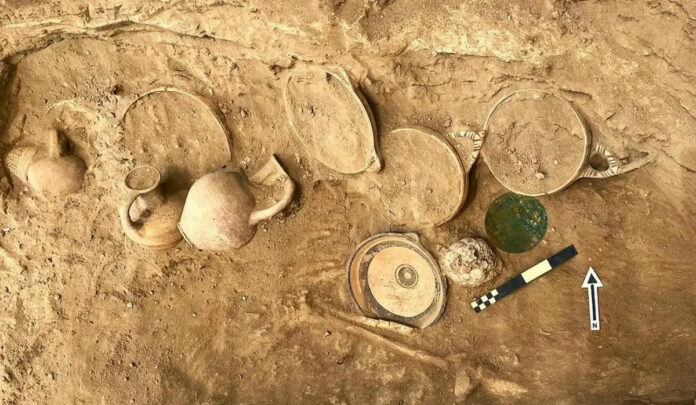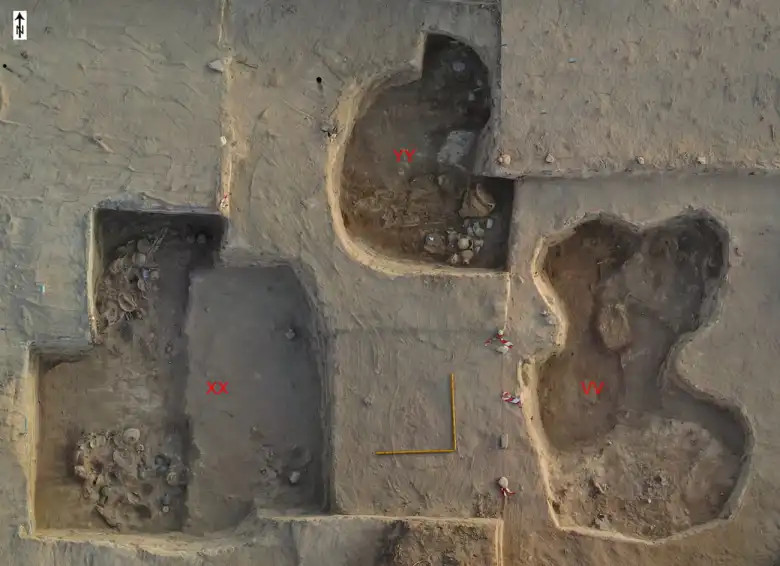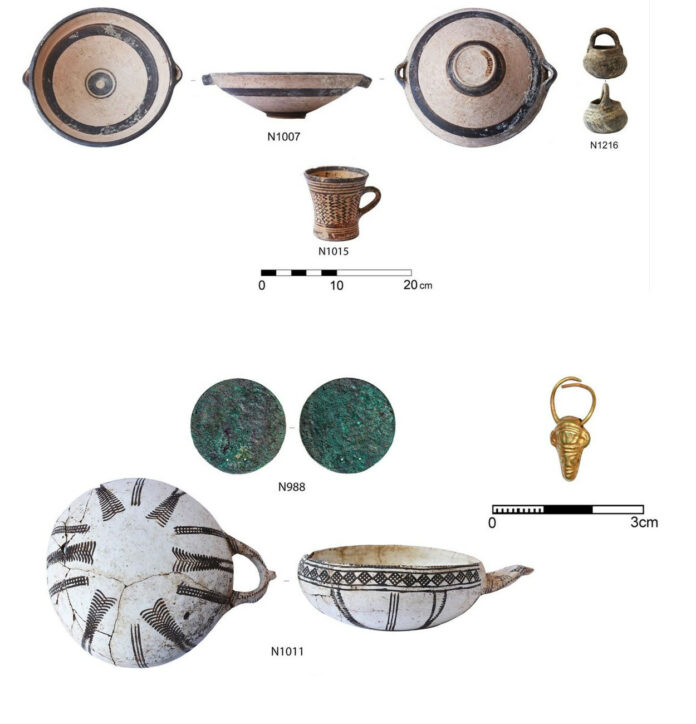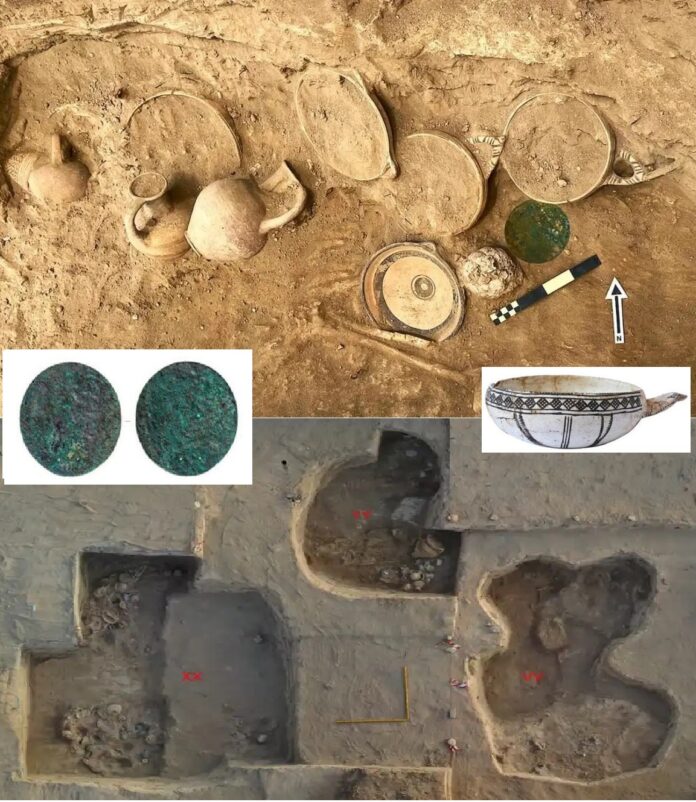Excavations at the ancient site of Hala Sultan Tekke, located on the southeastern coast of Cyprus, have led to the extraordinary unearthing of a rare Aegean bronze mirror, estimated to be around 3,300 years old. This mirror, discovered within an intact tomb in the city’s extramural necropolis, offers new insights into the diverse cultural influences and extensive trade networks of the Late Bronze Age.

Hala Sultan Tekke: A Center of Commerce
Between 1630 and 1150 BCE, Hala Sultan Tekke thrived as a strategic trading hub along the Mediterranean Sea. Recent excavations concentrated on the city’s necropolis, where archaeologists unearthed a series of untouched tombs, including Chamber Tomb XX, dated to approximately 1300 BCE.

A Showcase of Cultural Diversity
Chamber Tomb XX contained the remains of four out of a total of 17 individuals, accompanied by an impressive collection of 264 complete artifacts. These items, ranging from everyday objects to funerary offerings, displayed a wide array of cultural influences, including Mycenaean, Minoan, Canaanite, Egyptian, and Levantine. This highlights the extensive trade networks and cultural exchanges of the era.

The Rare Aegean Bronze Mirror
Among the remarkable discoveries in Tomb XX was a rare Aegean bronze mirror, measuring between 11.2 and 11.4 centimeters in diameter and weighing 156 grams. The mirror exhibits characteristics typical of Aegean mirrors from that period, especially those from Crete. The lack of preserved rivets or handles suggests these components were likely made from perishable materials such as wood, ivory, or bone.
Symbolic Significance and Elite Connections
The inclusion of the mirror in the funerary context signifies its importance as a personal item of symbolic value, possibly reflecting the aesthetic tastes and social status of its owner. Although Aegean-type mirrors were relatively uncommon on the island, their presence in Tomb XX highlights the elite’s connections with distant cultures and the exchange dynamics of the Late Bronze Age. This significant discovery at Hala Sultan Tekke aligns with earlier findings, such as a similar mirror in Enkomi Tomb 66, further underscoring the city’s role as a cultural exchange hub during this fascinating historical period.




